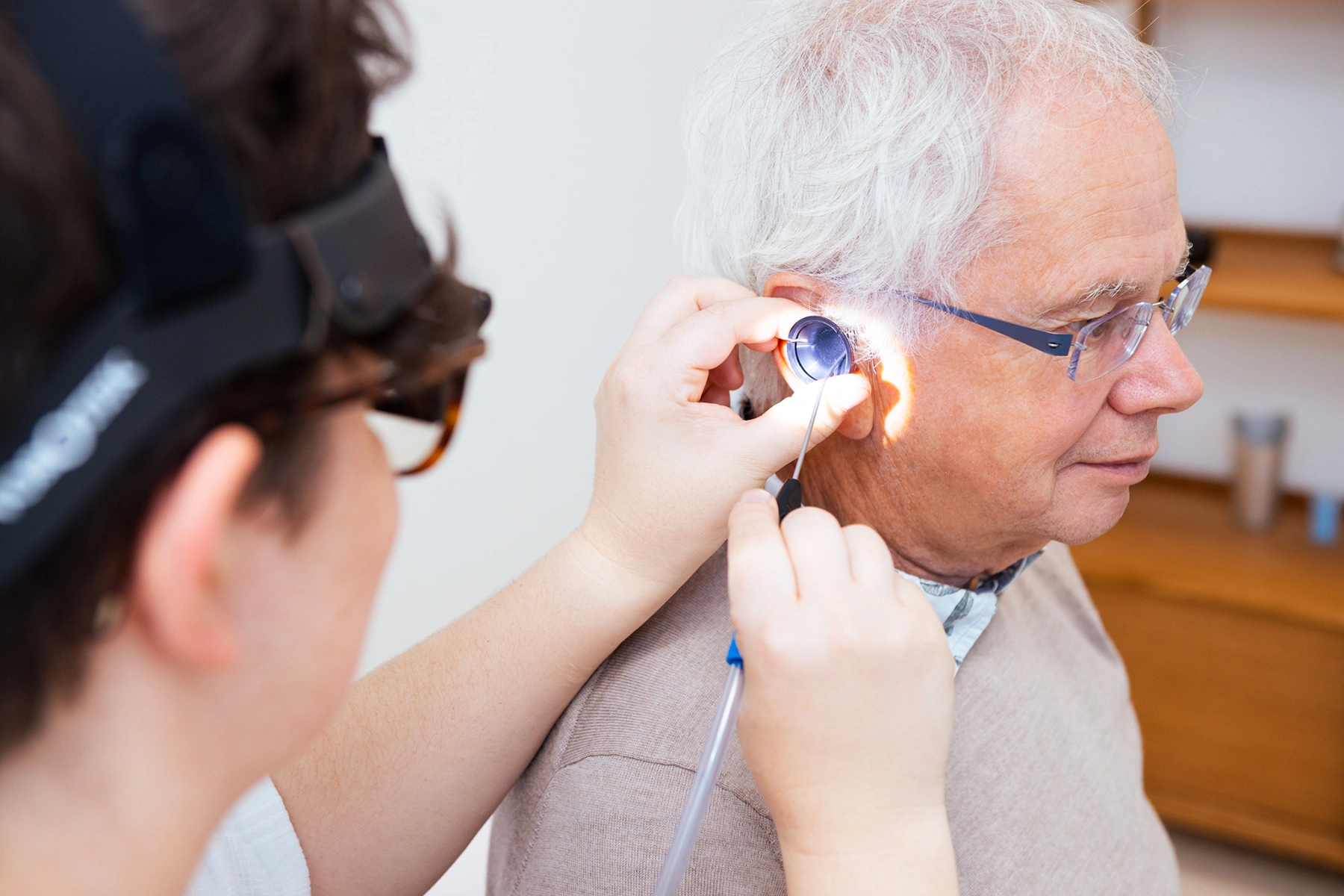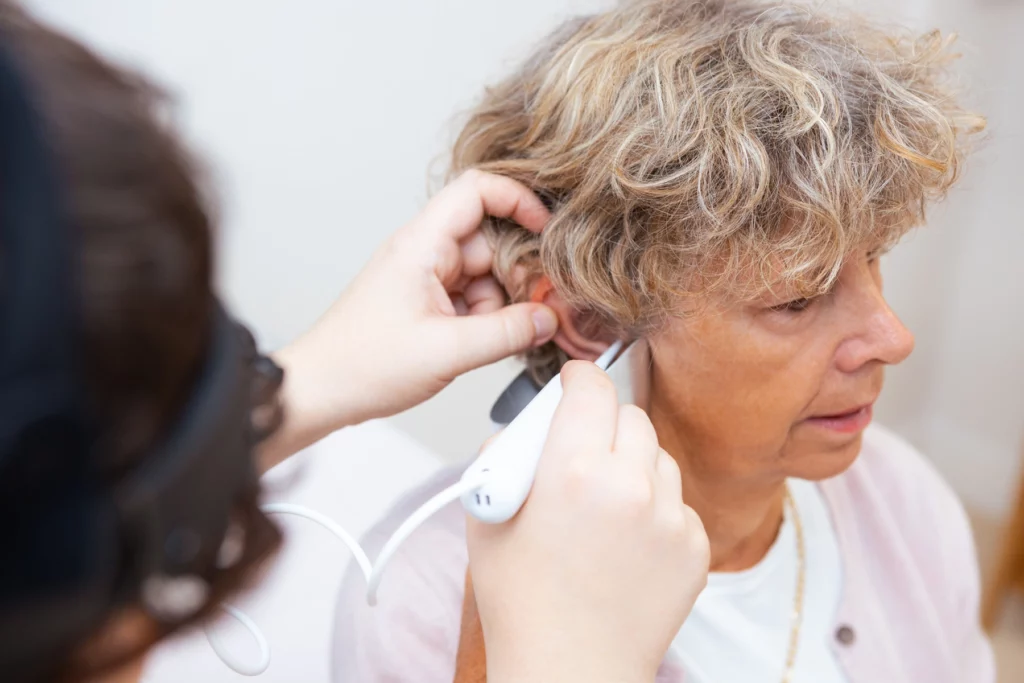
How to Get the Best Results with Your Hearing Aids
Hearing aids are life-changing devices for individuals experiencing hearing loss. They reconnect you to conversations, sounds, and moments that matter.

Ear wax is naturally produced by your ear canal and plays a crucial role in protecting your ears and keeping them healthy and working well. However, excessive production of ear wax can lead to discomfort and hearing difficulties. When wax builds up in the ear professional ear wax removal is often required. In this guide we will look into:
Ear wax, or cerumen, is an oily or waxy substance that is produced by the skin of the outer part of the ear canal. Ear wax is a completely normal, natural substance that your ears require to stay clean and healthy. It acts as a protective barrier that traps dust, dirt and any other foreign objects that enter your ear canal. Ear wax is also creates a slightly acidic environment that prevents the growth of viruses, bacteria and fungi to help to protect against ear infections. On top of all this, ear wax also works to keep your ears moisturized, helping to prevent dryness and itching!
Ear wax is an important part of the self-cleaning function of your ears. Most people produce ear wax naturally in just the right amount. This ear wax gradually moves out of the ear naturally through a process called migration. As the wax moves out of the ear it will take dead skin cells, dust and debris with it, keeping the ear canal clean and healthy. This process happens so slowly that most people don’t notice it, and you can clean this ear wax away during the regular cleaning of the outer ear. There is no need to clean inside the ear – in fact this can often result in wax being pushed further into the ear canal!
However, some people do suffer from a buildup of ear wax, which can lead to discomfort or loss of hearing. Some reasons this might happen include:
If you are suffering from a blockage of ear wax the the quickest and most effective way to resolve this is to visit a professional. Book an appointment with us today at our Daventry ear wax removal clinic.

Most of the time your ears will keep themselves clean and clear or ear wax. However, if you do develop a blockage in your ear canal it can cause a number of symptoms. Some of the possible symptoms of ear wax occlusion include:
Some of the symptoms of a blockage of ear wax could also be caused by other conditions. It’s important to visit a health professional to have your ears checked out urgently if you experience the following symptoms:
At Zest Hearing Care all of our ear wax removal appointments include a thourough ear health and hearing check also. If any other conditions are identified we will ensure that you receive the right support.

This section discusses various methods for removing ear wax, including ear drops, ear irrigation and microsuction.
There are a number of different types of ear drops, and they are available from most pharmacies. The most common types of ear drops are olive oil and sodium bicarbonate. Olive oil ear drops work by softening the ear wax, which helps it to move of your ear canal. Sodium bicarbonate ear drops help the wax to break up into smaller pieces which can more easily leave your ear.
Although for some people ear drops can work well, for the majority of people the results are temporary. After using drops the wax softens, or begins to break up. This opens up a small channel though your ear canal, leading to a relief from your symptoms. However the majority of the ear wax often does not move out of your ear canal. This means that as your ear continues to produce wax the symptoms will return, often more severely than before.
For this reason at Zest Hearing Care we recommend that you arrange an appointment to visit us for a professional ear wax removal procedure as soon as you first notice symptoms of ear wax blockage.
Microsuction is a relatively new method of wax removal and uses a small vacuum to gently suck the ear wax out of the ear. It is important to make sure that you see an experienced, qualified ear care professional to perform microsuction, as any mistakes can cause lasting damage to your ear and hearing.
Ear irrigation is a more traditional method for removing ear wax, involving the use of warm water to wash out the wax. This method is safe for most people, but is not suitable for anyone who has perforated eardrums or has had surgery on their ears in the past.
If the wax is near to the entranceto the ear canal it is sometimes possible to remove the wax manually. Your clinician might use a small hook or a special pair of tweezers to grab hold of the wax and move it out of your ear.
At Zest Hearing Care our clinicians are qualified and experienced in all methods of ear wax removal. You can be certain that your comfort and safety is our highest concern. If you are worried about a build up of ear wax book an appointment today and see what we can do for you.

Hearing aids are life-changing devices for individuals experiencing hearing loss. They reconnect you to conversations, sounds, and moments that matter.
Living with hearing loss can present challenges that disrupt your daily life, whether it’s difficulty following conversations or missing out